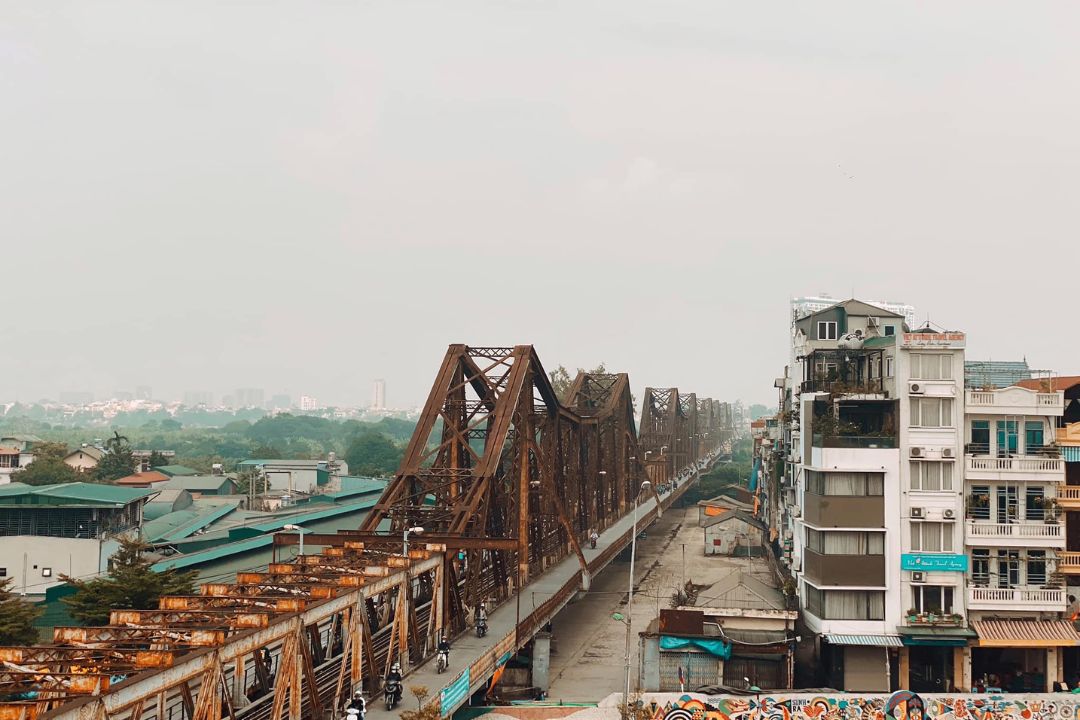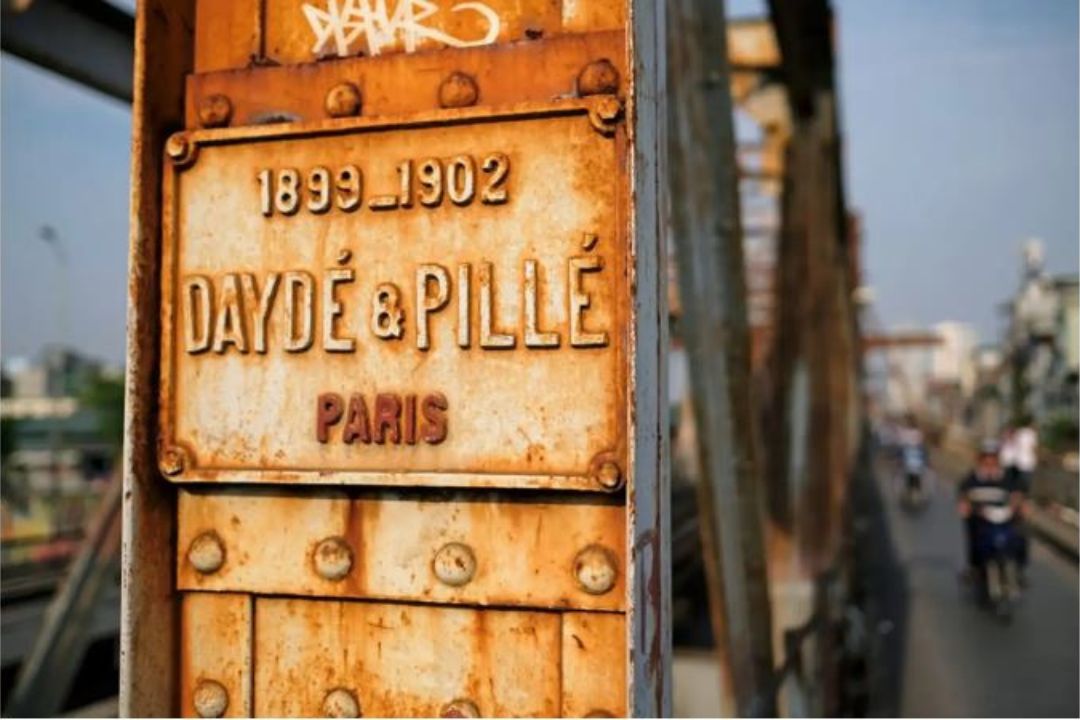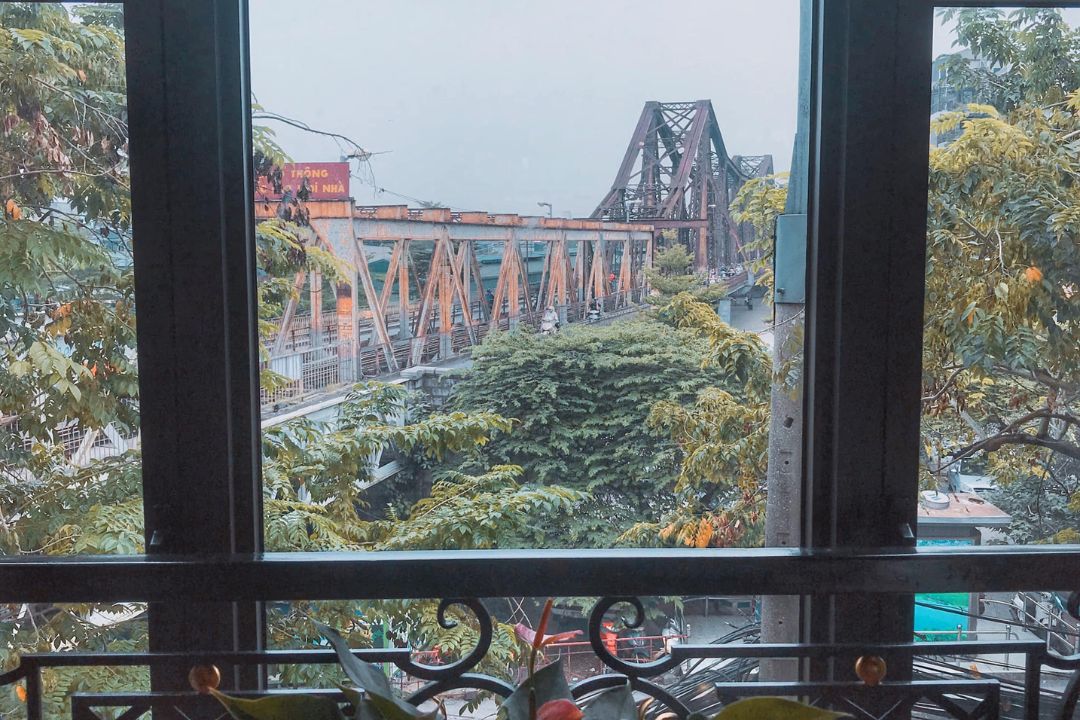Long Bien Bridge is a historical bridge that has witnessed many ups and downs of the capital. Despite numerous challenges, the bridge still stands proudly, becoming an enduring symbol in the hearts of Hanoi residents. Moreover, it offers an ideal vantage point to admire a different, nostalgic, and romantic Hanoi.
1/ Introduction to Long Bien Bridge:
Long Bien Bridge is the first steel bridge spanning the Red River, connecting Hoan Kiem and Long Bien districts. Constructed by the French in 1898, it was inaugurated on February 28, 1902, originally named Doumer Bridge. After the liberation of the capital, it was renamed Long Bien by Hanoi’s Governor – Dr. Tran Van Lai, and it retains that name to this day. Beyond being a vital transportation link across the Red River, the bridge played a significant role in two resistance wars against foreign invaders, particularly during the Vietnam War when it suffered severe damage from intense bombing raids.

Over the centuries, Long Bien Bridge has withstood the test of time, bearing witness to history and becoming an iconic symbol of the capital.
2/ Length of Long Bien Bridge:
At the time of its construction, Long Bien Bridge was considered an architectural marvel on a regional and global scale. The bridge features 19 steel spans supported by 20 sturdy pillars, stretching nearly 2,300 meters (specifically 2,290 meters). Additionally, on the west side of Long Bien Bridge, there is an additional 896 meters of stone path leading up to the bridge. Upon its completion, Long Bien Bridge was recognized as the second-longest bridge in the world (the first being the Brooklyn Bridge spanning the East River in the United States). Some even playfully compare Long Bien Bridge to the Eiffel Tower lying horizontally in Hanoi.

Moreover, the bridge’s width is approximately 4.75 meters, divided into three main lanes. The outer lanes, each 2.6 meters wide, accommodate cars, motorcycles, and other vehicles, while the 9.4-meter center lane is reserved for pedestrians. The central part of the bridge is dedicated to railway operations.
3/ Transportation to Long Bien Bridge:
To visit this historical bridge, you can choose personal means of transportation such as motorcycles or ride-sharing services. Currently, Long Bien Bridge prohibits private cars and taxis due to its deteriorating condition. From Hoan Kiem Lake, it takes about 15 minutes on foot to appreciate the ancient beauty of the bridge.
4/ Design and Construction Firm:
Long Bien Bridge was designed and built by the renowned French contractors Daydé & Pillé from Paris. The bridge was constructed using state-of-the-art methods of that era, meeting both technical and artistic criteria. The entire bridge structure is a tightly layered steel framework, artistically harmonious and impressive. From a distance, the bridge resembles a giant dragon gracefully spanning the vast Red River.

5/ Unique Architecture of Long Bien Bridge in Hanoi:
During its construction, Long Bien was considered the largest bridge in the region and globally. The bridge’s structure consists of 19 steel spans, supported by 20 large pillars with a total length of 2,290 meters. On the west side of the bridge, there is an 896-meter stone path leading up to it.
With a width of 4.75 meters, the bridge is divided into three main lanes. Two lanes, each 2.6 meters wide, are for cars, motorcycles, and various vehicles, while the outer 0.4-meter lanes are reserved for pedestrians. The central area is a dedicated railway zone for train operations.

Unlike other bridges in Vietnam, the traffic flow on Long Bien Bridge is directed to the left, a design characteristic commonly found in European countries, particularly in France. Many people associate this bridge with Tolbiac Bridge, connecting Orleans to Paris, France. Upon its inauguration, Long Bien Bridge was the second-longest bridge in the world, following the Brooklyn Bridge over the East River in the United States. The historical bridge was even compared to the Eiffel Tower lying horizontally in Hanoi. With its impressive iron architecture, Long Bien has remained the most talked-about bridge in the capital for many years.
